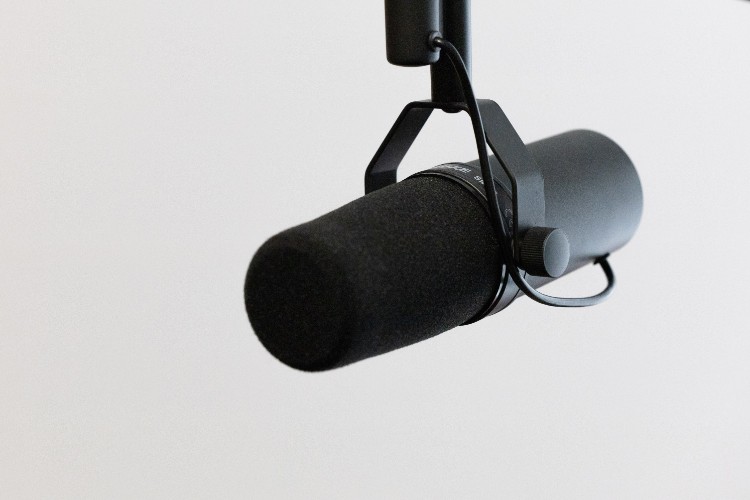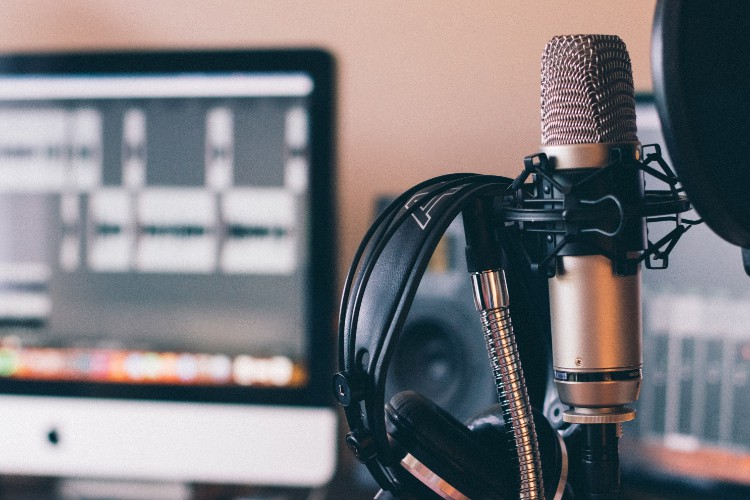Estimate reading time:
Getting your podcast to sound just like professional podcasters is a challenge especially when your audio editing skills are lacking. So how do you improve the audio quality of your podcast?
Recording clear podcasts is largely the result of making use of a clean audio signal chain. For instance, the recording process involve everything from room acoustics, mic choice, mic placement and post audio effects, all of which plays significant roles in the sound of your podcast.
For the most part, beginners and amateur podcasters are incapable of deducing the reasons why their podcasts’ audio sound subpar. Am I using equalization correctly? Am I over compressing my audio? What about those annoying reverberations that make my speech unclear?
In this article, we’ll discuss tips for recording better sounding podcasts.
Aim for clean recording
Before we get into the fancy plugins that will ultimately make us sound like a podcast rock star, it’s important that our initial recording sounds as good as possible. Most podcasters don’t have the luxury of recording in top-notch recording studios so we'll need to ensure we record in optimal spaces.
First, find a quiet space and time to record. If you’ve got a family and noisy roommates at home, then pick a better time to record your podcast. For instance, some podcasters record late at night when street traffic and ambient sounds are greatly reduced. Just remember that a clean recording leads to superior sound quality. This means that bad audio recordings are seldom improved in post. If you don’t have all of the fancy tools to improve your audio in post, then opt for the cleanest recording possible. As they say in audio “ you can’t polish a turd”.
Additional articles on podcast recording:
- How to record voice overs
- Eliminate breath and swallow sounds when recording your podcast
- How to record better podcast voice overs with compression
Don't ignore room acoustics when recording a podcast
Once you’ve committed to a dedicated recording space, listen to the amount of ambient and room reverberations. It’s important to know that excessive room reverb can drown out your speech. Too much reverb and you run the risk of sounding unintelligible whereby the only thing the lister hears is the reflections from your room.
When speaking into a microphone, the direct signal travels from your mouth to the capsule, the part of the mic that registers the incoming sound pressure. The remaining signals that scatter to the surrounding walls then bounce back into the mic capsule a few milliseconds later are what causes your speech to sound unclear. It’s like having many people say the same words at slightly different times. Those delayed copies of your speech are known as reflections.
If your room is too reflective or reverberant, you’ll need to reduce reflection in order for your dry signal to be heard. The more reflections you absorb, the better your speech will sound.
How to eliminate reflections in your recording environment
It’s time to treat your room. Diffusers and absorbers will scatter and absorb reflections when placed throughout your recording area. Place them on the walls in front and behind your recording zone. If you're on a budget, then place a couch behind your recording region. Alternatively, you can also place thick blankets throughout your room.
Your goal is to perverse the driest audio while reducing the amount of reflections. It’s not uncommon to see podcasters record entire sessions in the inside of a closet padded with blankets. Don’t worry about how this looks, it will sound great. Of course this is not always recommended for podcasters that make use of video components. In such cases, a few diffusers ought to do the trick.
Microphone placement

Besides stating the obvious, mic placement is important so be sure to follow your microphone manufacturer’s guidelines. If you find that your speech recordings capture too much bass, then move a few inches away from the mic. The closer you move to the mic, the more bass you capture. Conversely, staying too far from the microphone will result in more reverberations being picked up so be sure to adjust your recording position accordingly.
Microphone filter

A microphone filter will reduce the amount of sibilance and control plosives that are heard in your vocal speech pattern. Defined as being sudden bursts of air that overload the microphone capsule, plosives make your recording sound amateurish. Ensure that your mic filter is placed between your microphone and your speaking position. Doing so guarantees that your filter will break up those sudden bursts of air while taming them as they encounter the mic capsule.
How to remove silence in podcast during post audio editing
Once your room treatment and recording protocols are in place, start recording. Once completed, you can now start to edit your audio by removing unnecessary silences. If you haven’t done so already, simply import your recording into an audio editing software like Adobe Audition and highlight and delete silences. This makes for a tighter and more engaging podcast.
How to remove sibilance
Defined as the high frequency content that makes its way into a recording, sibilant phrases and words can undermine the sound quality of your recording. For instance, the sound of “s”s are sometimes piercing to the listener and may shorten listening times in some instances. A microphone filter can greatly reduce unwanted hissing sounds.
How to use an equalizer in post
Next, use an equalizer to remove low frequency rumble and bass frequency from our voice. Use a high pass filter and set it to 90HZ. Doing so ensures that low-frequency content is reduced. Furthermore, you can reduce some of the muddiness in the 150-300 Hz range by a few dBs. This region is notorious for muddiness in regards to the frequency spectrum so set your equalizer node to a bell curve and etch=out a few dB to taste.
Lastly, you can always brighten your audio sparingly by adding a boost at 1K and 4K. Don’t overdo it; a small amount goes a long way.



